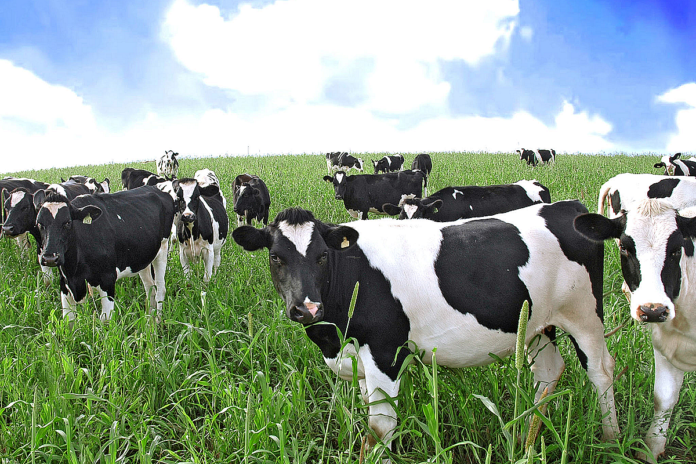The following article is published in Lakeland Dairies / Teagasc Joint Development Programme’s innovative and informative 28-page booklet.
The booklet contains recommendations, tips and case studies, aimed at making farm life easier for Lakeland Dairies’ milk suppliers.
Seamus Murray, Co. Monaghan runs a compact calving herd but has aimed to reduce the workload during calving season and calf rearing with a number of simple ideas.
March and April is the busiest time on my farm. Being prepared and having an effective calf routine, saves me many hours work.
The bulk calving pen is very handy. I look through the dry cows daily and put any cows close to calving in the bulk calving pen. There can be 15 cows in the pen at any one time. The bulk pen is great – It is serviced with water and has access to a feeding rail.
I leave a block of silage at the barrier; this was a big saving compared to years ago, having one cow per pen and bringing a barrow of silage to each cow.
The cows calve in the bulk pen and the priority is to get colostrum into the calf ASAP. I milk every cow in the parlour and bottle/stomach tube every calf with at least 3-litres of colostrum as soon as they are born.
I bunch new-born calves into bunches of four and five in the bulk calving pen using sheep hurdles. They are trained to a teat feeder. Once they are drinking independently, they are batched in groups of 10.
The calf sheds are very important spaces on farms. The stocking density is the biggest concern for me and I don’t overstock pens. Each calf gets 1.7m2 of space (18ft2). Pens were designed to hold 10 calves. Bull calves are housed separately; they are fed whole milk and are sold off the farm as soon as possible.
Selling the bulls reduces the peak calf numbers on the farm. Heifer calves are housed in a converted beef shed.
The heifers are fed once-a-day from four weeks of age. I have done that for the last four years and it is working great. It is important to always have fresh water, straw and concentrate available to ensure a successful calf
rearing.
Seamus’ tips to reduce the calf rearing workload:
1. Bulk calving pen;
2. Colostrum 3+ litres ASAP;
3. Correct stocking density 1.7m2/calf;
4. Clean water;
5. Sell bull calves early to reduce peak calf numbers;
6. Once-a-day milk replacer after 4 weeks of age;
7. Simple milk cart to move milk;
8. Dry bedding and clean water checked daily;
9. Easy calving bulls;
10. Correct cow body condition scores early;
11. Get calves settled into their pens;
12. Remove sick calves from the group to reduce infection pressure.
File photo





